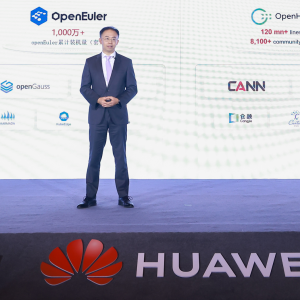A year ago Dolphin Interconnect Solutions Inc had to drastically curtail its American operations, after a disastrous attempt to compete head-on with Compaq Computer Corp’s ServerNet (CI No 3,482). Once the darling of high-end Unix vendors, including Sun Microsystems Inc and Data General Corp, Dolphin specialized in systems based on the SCI Scalable Coherent Interface. The company threw some $20m behind efforts to repeat its Unix success in the NT market, to little effect. Its interconnect boards are still available, but despite impressive latency figures they have been left behind on throughput performance and show no signs of being rejuvenated.
But Framingham, Massachusetts-based Dolphin – originally a Norwegian company – hasn’t drowned yet, and it’s still eyeing the affordable cluster market with its interconnect products. The latest involves a collaborative project code-named WulfKit. Although not derived from Microsoft’s WolfPack, the name suggests Dolphin feels safe in thumbing its nose at it. (It’s not the only one – the joke about Wolfpack, still limited to clusters of two, is that its alternative name should be WolfPair). What Dolphin obviously isn’t comfortable with is taking another tilt at NT clustering alone: in addition to NT, WulfKit also targets two popular Unix variants (Linux, and Sun’s Solaris), and the company has worked with its WulfKit partner before.
That partner is another Norwegian company, Scali Computer AS, which was spun off from a subsidiary of local defense contractor Kongsberg two years ago. Scali has had some notable successes, integrating high-end Pentium or Sparc boards with its cluster- management and configuration software. Among its customers is Germany’s Siemens AG, whose new high-performance computer (HPC) range employs Scali management and communications code. Scali has put together several large supercomputers, featuring scores of nodes with SCI-based interconnects from Dolphin.
The two companies developed WulfKit for the Beowulf clustering technology, developed at Nasa and since contributed to the open- source Linux code-base. Beowulf has been praised for outperforming a number of clustering systems, but, like most of them, it drags its heels somewhat when an application demands intensive communication between nodes. Scali decided the way to relieve these bottlenecks was with a novel arrangement of interconnect switches: a 2-D web of rings. To help create such structures, WulfKit provides Dolphin interconnects, along with communications code written by Scali in accordance with MPI from the Message-Passing Interface Forum. In addition a customer need only supply servers, in order to build a toroidal Beowulf cluster and start parallel processing for a modest outlay.
Linux, Beowulf’s host operating system, is now the Unix flavor with the fastest-growing user-base. Many vendors fit easily into the Linux picture: hardware manufacturers, of course, with commodity servers gaining a significant new market; special solution providers like Dolphin/Scali; and applications houses. Linux challenges the Unix variants from one-stop shops such as Sun, Hewlett-Packard, and Silicon Graphics, but their customers demand professional support, and the Linux market for low cost Intel boxes affects their hardware sales only slightly. However, cheap clustering may turn Linux into a real problem for one group: vendors for whom some other version of Unix is the key earner. Several Beowulf/Linux installations have cost nearly an order of magnitude less than similar Unix setups, and delivered commodity supercomputing for around $150k.
This article is an extract from a longer piece in our sister publication Software Futures.






